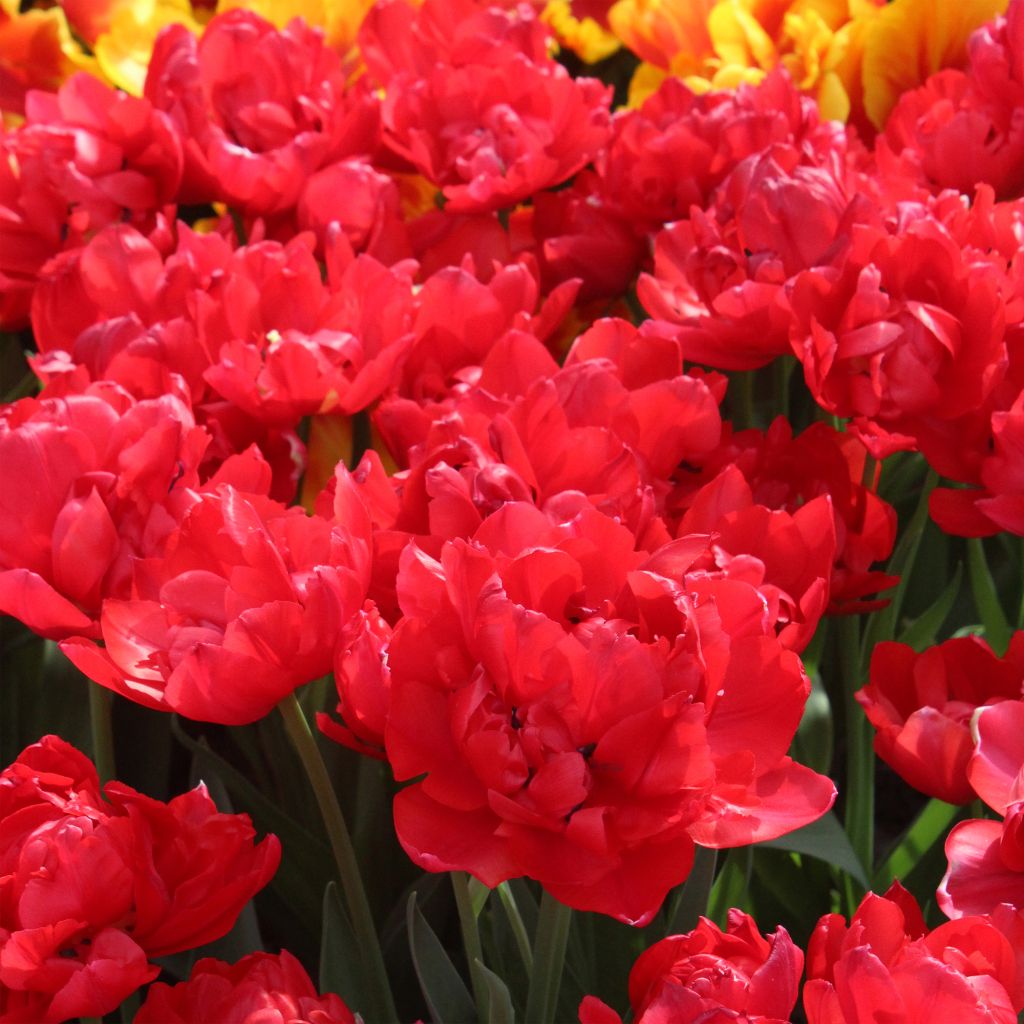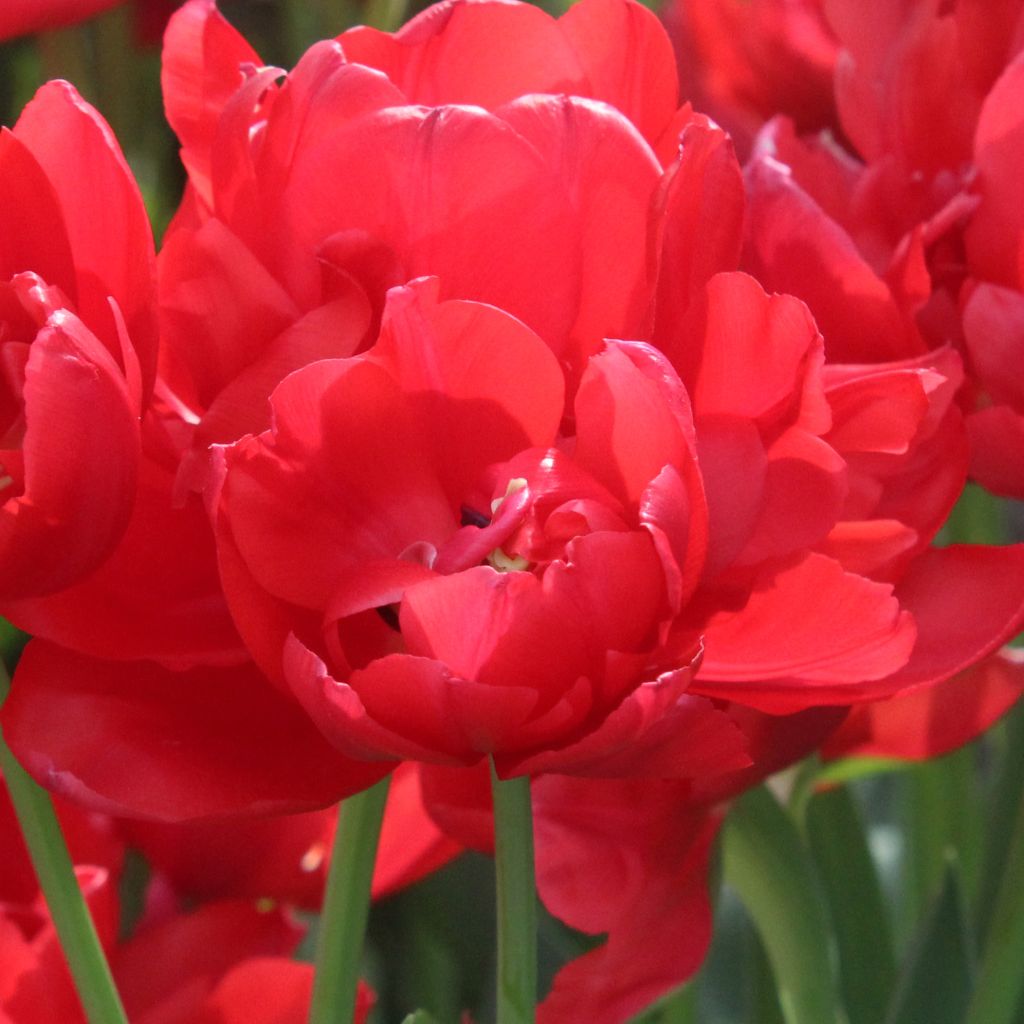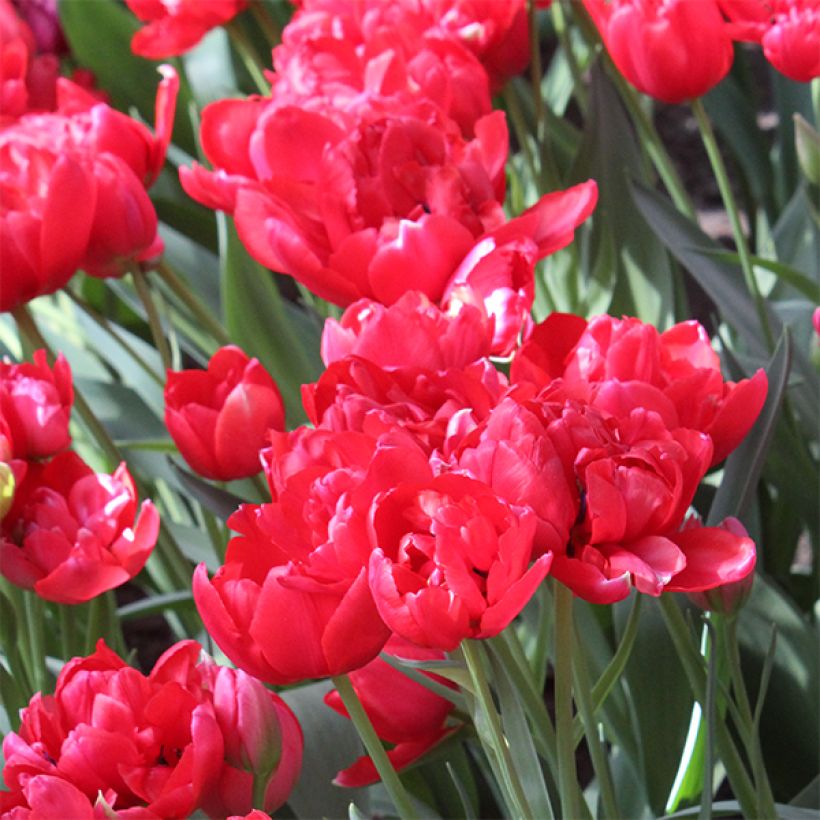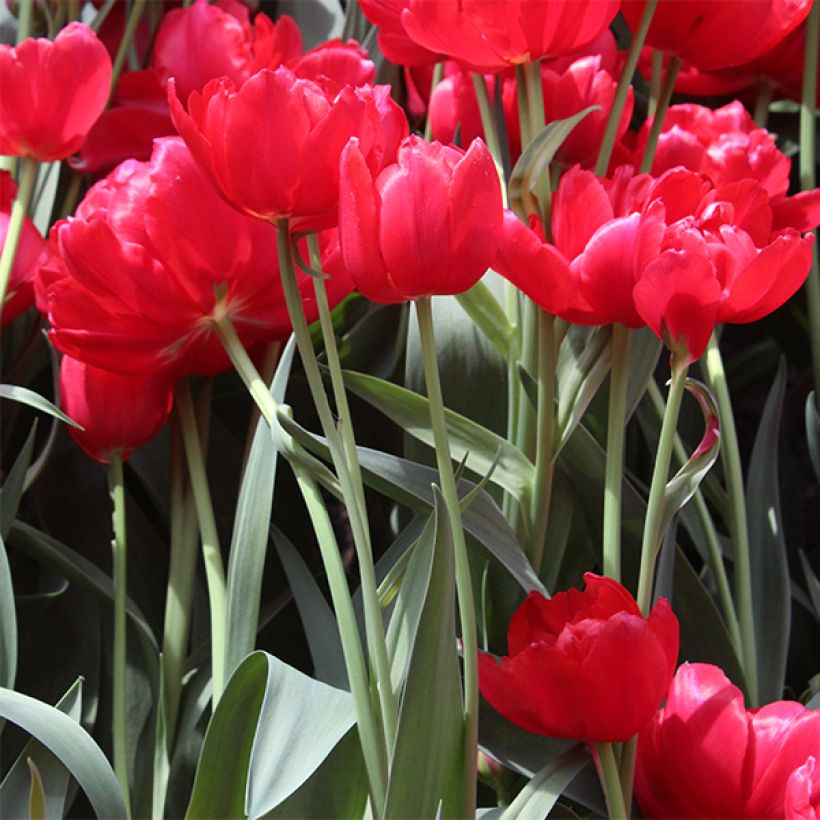

Tulipe double tardive Estatic (pluriflore)


Tulipe double tardive Estatic (pluriflore)
Tulipa Estatic
Tulipa Estatic
tulip
Received instead of the Georgettes (shipping error!) They are adorable! Do they come back from one year to the next?
isabelle, 12/07/2023
This plant carries a 6 months recovery warranty
More information
We guarantee the quality of our plants for a full growing cycle, and will replace at our expense any plant that fails to recover under normal climatic and planting conditions.
From €5.90 for pickup delivery and €6.90 for home delivery
Express home delivery from €8.90.

Does this plant fit my garden?
Set up your Plantfit profile →
Description
The Estatic Late Double Tulip is a variety with bright red flowers, resembling peony flowers. This recent variety is multi-flowering, with each bulb producing 3 to 5 flowers. It has a height of about 45 cm (18in). Tulips are easy to grow, brighten up the garden in spring and make beautiful colourful bouquets. Bulbs should be planted in autumn for flowering in May.
Tulip is a bulbous plant that has become essential in the garden, easy to grow and adaptable to all climates. There are about a hundred species and several thousand cultivars of tulips, allowing for a great diversity of shapes and colours. The flowers appear between March and May depending on the varieties, open during the day and close in the evening. The leaves are lanceolate, usually medium green, sometimes variegated.
Among the many species, botanical tulips are usually distinguished from domestic tulips (or garden tulips). The latter are derived from the Tulipa gesneriana and are classified into 14 families. For example, there are single or double tulips, early or late tulips (like the Estatic variety here), triumph tulips, Darwin tulips, lily-flowering tulips, parrot tulips... Garden tulips often have large flowers and long stems, making them perfect for beautiful bouquets.
In the garden, tulips will be perfect for brightening up a flower bed, combined with crocuses, hyacinths, daffodils, pansies, muscari... They can also be planted in the middle of a lawn, creating a beautiful burst of colour in spring. For planting in pots, choose early varieties with shorter stems.
Report an error about the product description
Tulipa Estatic in pictures




Plant habit
Flowering
Foliage
Botanical data
Tulipa
Estatic
Liliaceae
tulip
Cultivar or hybrid
Planting and care
Tulip bulbs are planted from October to mid-December for spring flowering. Plant them in a sunny or partially shaded area, preferably in a sheltered spot. Tulips thrive in rich, well-drained soil and can tolerate dry soil in the summer. If your soil is very clayey, incorporate some sand into the soil before planting or place some gravel at the bottom of the planting hole.
Work the soil deeply and remove unwanted weeds or rocks. Dig a hole using a bulb planter and bury the bulbs, pointy side up, two to three times their height. Space the bulbs about 10 cm (4in) apart. Bulbs can be planted individually or in groups of 5 to 10 for a beautiful colour effect. You can either place them one by one on the ground or scatter them for a more natural effect in flower beds. Lightly water after planting.
For container planting, provide drainage at the bottom of the pot (clay balls or gravel) and then plant the bulbs in a mixture of potting soil, topsoil, and a little bit of sand. Add a small amount of compost when flowering.
Tulips require little maintenance. Water if necessary in spring. Remove faded flowers to avoid exhausting the bulb. After flowering, allow the foliage to naturally die down and only cut it when it turns yellow, to encourage the accumulation of new reserves in the bulb.
Unlike botanical tulips, large-flowered tulips will degenerate after 2 to 3 years if left in the ground. You can choose to leave them in place and regularly renew them or you can dig up the bulbs when the foliage is dry. Remove the soil around the bulbs and then store them in a cool, dry, and dark place and plant them again in the following autumn.
Planting period
Intended location
Care
-
, onOrder confirmed
Reply from on Promesse de fleurs
Haven't found what you were looking for?
Hardiness is the lowest winter temperature a plant can endure without suffering serious damage or even dying. However, hardiness is affected by location (a sheltered area, such as a patio), protection (winter cover) and soil type (hardiness is improved by well-drained soil).

Photo Sharing Terms & Conditions
In order to encourage gardeners to interact and share their experiences, Promesse de fleurs offers various media enabling content to be uploaded onto its Site - in particular via the ‘Photo sharing’ module.
The User agrees to refrain from:
- Posting any content that is illegal, prejudicial, insulting, racist, inciteful to hatred, revisionist, contrary to public decency, that infringes on privacy or on the privacy rights of third parties, in particular the publicity rights of persons and goods, intellectual property rights, or the right to privacy.
- Submitting content on behalf of a third party;
- Impersonate the identity of a third party and/or publish any personal information about a third party;
In general, the User undertakes to refrain from any unethical behaviour.
All Content (in particular text, comments, files, images, photos, videos, creative works, etc.), which may be subject to property or intellectual property rights, image or other private rights, shall remain the property of the User, subject to the limited rights granted by the terms of the licence granted by Promesse de fleurs as stated below. Users are at liberty to publish or not to publish such Content on the Site, notably via the ‘Photo Sharing’ facility, and accept that this Content shall be made public and freely accessible, notably on the Internet.
Users further acknowledge, undertake to have ,and guarantee that they hold all necessary rights and permissions to publish such material on the Site, in particular with regard to the legislation in force pertaining to any privacy, property, intellectual property, image, or contractual rights, or rights of any other nature. By publishing such Content on the Site, Users acknowledge accepting full liability as publishers of the Content within the meaning of the law, and grant Promesse de fleurs, free of charge, an inclusive, worldwide licence for the said Content for the entire duration of its publication, including all reproduction, representation, up/downloading, displaying, performing, transmission, and storage rights.
Users also grant permission for their name to be linked to the Content and accept that this link may not always be made available.
By engaging in posting material, Users consent to their Content becoming automatically accessible on the Internet, in particular on other sites and/or blogs and/or web pages of the Promesse de fleurs site, including in particular social pages and the Promesse de fleurs catalogue.
Users may secure the removal of entrusted content free of charge by issuing a simple request via our contact form.
The flowering period indicated on our website applies to countries and regions located in USDA zone 8 (France, the United Kingdom, Ireland, the Netherlands, etc.)
It will vary according to where you live:
- In zones 9 to 10 (Italy, Spain, Greece, etc.), flowering will occur about 2 to 4 weeks earlier.
- In zones 6 to 7 (Germany, Poland, Slovenia, and lower mountainous regions), flowering will be delayed by 2 to 3 weeks.
- In zone 5 (Central Europe, Scandinavia), blooming will be delayed by 3 to 5 weeks.
In temperate climates, pruning of spring-flowering shrubs (forsythia, spireas, etc.) should be done just after flowering.
Pruning of summer-flowering shrubs (Indian Lilac, Perovskia, etc.) can be done in winter or spring.
In cold regions as well as with frost-sensitive plants, avoid pruning too early when severe frosts may still occur.
The planting period indicated on our website applies to countries and regions located in USDA zone 8 (France, United Kingdom, Ireland, Netherlands).
It will vary according to where you live:
- In Mediterranean zones (Marseille, Madrid, Milan, etc.), autumn and winter are the best planting periods.
- In continental zones (Strasbourg, Munich, Vienna, etc.), delay planting by 2 to 3 weeks in spring and bring it forward by 2 to 4 weeks in autumn.
- In mountainous regions (the Alps, Pyrenees, Carpathians, etc.), it is best to plant in late spring (May-June) or late summer (August-September).
The harvesting period indicated on our website applies to countries and regions in USDA zone 8 (France, England, Ireland, the Netherlands).
In colder areas (Scandinavia, Poland, Austria...) fruit and vegetable harvests are likely to be delayed by 3-4 weeks.
In warmer areas (Italy, Spain, Greece, etc.), harvesting will probably take place earlier, depending on weather conditions.
The sowing periods indicated on our website apply to countries and regions within USDA Zone 8 (France, UK, Ireland, Netherlands).
In colder areas (Scandinavia, Poland, Austria...), delay any outdoor sowing by 3-4 weeks, or sow under glass.
In warmer climes (Italy, Spain, Greece, etc.), bring outdoor sowing forward by a few weeks.


































